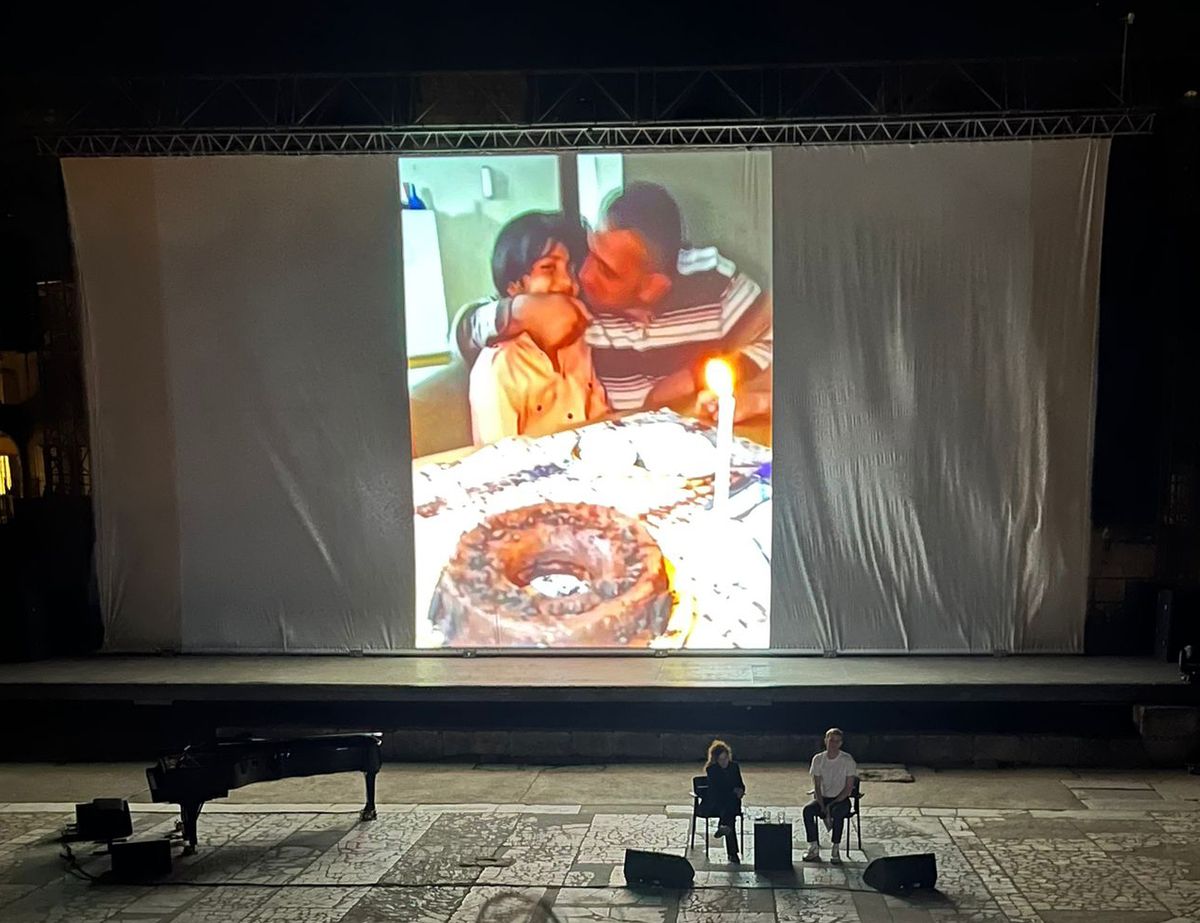The American photographer Nan Goldin was confronted by a protester during her acceptance of the 2025 Women In Motion Award at Les Rencontres d’Arles (until 5 October) photography festival Tuesday night, after using the occasion to draw attention to the humanitarian crisis in Gaza.
Speaking to a packed audience at the Roman-era Théâtre Antique, Goldin said: “The Rencontres are very brave to give me an award at this point in the world, and I’m not sure they’re going to be happy.” She went on to describe the conflict in Gaza as “the first live-streamed genocide”.
“Everyday, despite Israel targeting journalists, despite shadow banning on social media, and despite the blackout of access to information from mainstream media, we can see what is happening,” she said.
Goldin then used the acceptance of the award to display, on a huge projection screen, images taken from social media of Gaza before and after the Israeli military campaign launched in response to Hamas’s 7 October attacks. During the projection, which was shown in silence, a woman in the crowd interrupted by repeatedly shouting at Goldin: “Why don’t you talk about the hostages?”
The atmosphere turned tense, with sections of the audience drowning out the protester by chanting “Free Palestine”. Goldin attempted to engage with the protester by responding: “On 7 October, it’s horrible what happened. More than 1,000 people were killed. But where we are now—there are 50,000 dead on the other side. I think the revenge has been enough.”
Goldin, who is Jewish, added: “They are replicating what was done to them.” She also accused the Israeli government of using accusations of racism to quell freedom of speech, saying: “Anti-zionism has been totally conflated with antisemitism which is convenient for Israel. This has made the rise of real antisemitism more dangerous. Anti-zionism is weaponised to shut the mouth of anyone criticising the violent actions of the Israeli government.”
The photographer later went on to accuse the Israeli government of incorporating an opioid into food delivered in aid to Gaza, claiming “Israel put drugs in the flour to condemn people in Gaza to addiction and to a slow death”. The presence of drugs in flour delivered to Gazans by US and Israeli-backed aid centres has been reported by some media outlets, but has not been independently verified.
An outspoken figure
Goldin is in Arles to display her new body of work Stendhal Syndrome, a slideshow which juxtaposes images she has taken over the past 20 years with Classical, Renaissance and Baroque masterpieces. It is being shown in the Church of Saint-Blaise, a monastery founded by Saint Caesarius of Arles in the sixth century and desecrated during the French Revolution.
The American artist, who rose to prominence in the 1980s with her intimate images of queer communities and the Aids crisis, has long been recognised as one of photography’s most outspoken figures. This latest confrontation marks one of the most politically charged moments in the recent history of the Arles festival, and underscores the increasingly prominent role of activism in Goldin’s public appearances. A committed campaigner on issues ranging from the opioid crisis to LGBTQ+ rights and now the war in Gaza, Goldin has used recent public appearances, for example at the Neue Nationalgalerie in Berlin last year, to critique Israeli military action.
Rencontres d’Arles tells The Art Newspaper: "Speaking to a crowd of over two thousand, [Nan Goldin] acknowledged the significant role the Rencontres d'Arles has played in her career since the 1980s. Throughout the evening, she showcased her artwork and offered the audience insights into her life experiences and social perspectives.
“In line with her history of activism, Goldin also addressed the situation in Gaza and spoke out against the regression of LGBTQIA+ rights in the United States, particularly concerning the trans and non-binary communities. Les Rencontres d'Arles remains dedicated to providing a platform where artists can freely express themselves and share their viewpoints.”


